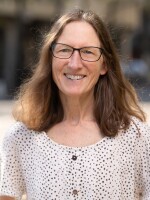While the business of art is always in flux, the Indigenous art community may see more dramatic change than most. As part of our series “Native Oregon Voices,” KLCC takes a look at the evolving Native American art scene.

Raven Chacon, a Diné tribal member, completed this composition, “Horse Notations,” while in residence at Crow's Shadow Institute of the Arts on the Umatilla Reservation in eastern Oregon.
Chacon: “It's based on an 1876 'Popular Science' article, in which a scientist had analyzed the paces of the horse, and turned them into this kind of graph notation showing the rhythms that are created as the horse gallops.”
A lot of legwork took place over time to give artists like Chacon access to resources and exposure for their art. Karl Davis is Executive Director of

Crow's Shadow. He says it was founded in 1992 to fill a need:
Davis: “What we strive to do is to have people recognize that it is on the same level as other contemporary artists, that it is being placed in the art gallery versus the history museum.”
More than 25 years later, art from the Institute hangs in the Whitney and the Boston Museum of Fine Arts—and not in history exhibits. Another Northwest-based advocacy group, The Native Arts and Cultures Foundation, was established in 2009.
Blythe: “There's a myth that Native American communities because of casinos can be self sufficient, but arts and culture still are at a lower priority in comparison to economic development, in comparison to retaining their sovereignty.”
Francene Blythe is Director of Programs at the Vancouver, Washington based nonprofit. She says grants and awards often catapult artists to another tier of recognition.

Ka'ila Farrell-Smith recently had a rewarding fellowship at Crow's Shadow. The South Eugene High School graduate says most tribes require a percent of native ancestry, or blood quantum, to be enrolled:
Farrell-Smith: “Even though there's honor and privilege to being a member of a tribe and I can access Native American art shows and exhibitions because I have that proof, I know other native artists that don't have the specific blood quantum and they can't get into art shows.”
Native artists feel a push and pull with identifying as part of a group. Chacon, the composer, hopes people appreciate Indigenous artists for their individual talent:
Chacon: “I think what we are seeing is less exhibitions that are just focused on Native artists, just showcasing work based on our identity, and you're seeing more and more Native artists included in major group exhibitions.”
A focus on identity, though, says Blythe, has recently helped bring Native artists into the light:

Blythe: “Everybody is realizing the importance of all voices and all cultures and all peoples and how we are all vitally a part of a whole human community.”
Farrell-Smith says most museums tend to buy work from only the most prominent Native artists. She now has pieces in the collections of the Portland Art Museum and the Jordan Schnitzer Museum of Art in Eugene:
Farrell-Smith: “And that means so much to me, because my community then gets to see those paintings, and it's really inspiring to the young people to have representation.”
Farrell-Smith says her cohort of rising Native artists respects and inspires each other.
Farrell-Smith: “We kind of made a pact a long time ago we want to support one another and we're not going to tear each other down because the art world is kind of designed to make you competitive with one another and that can become extremely toxic.”
She mentions Lillian Pitt as a model and hero. Pitt has worked prolifically for decades on ceramics, glass, bronze and printmaking.
Pitt: “I've always met people who are really wonderful to work with, because I can't do everything. And I've been lucky to find coworkers or collaborators that are very helpful, helping me get my vision out there.”

Pitt is working with Lummi glassblower Dan Friday on pieces that incorporate the petroglyphs and basket patterns of her ancestors. She's used those themes since the early 1980's.
Pitt: “Most Native American artists speak from their culture. And I have the ability to speak of my ancestors who have been here for thousands of years and do contemporary work.”
Francene Blythe notes that location-based connection is key to why everyone should support Indigenous art:
Blythe: “I think that the knowledge we carry is possibly unique to the world. Particularly here in the United States we are very much aware and can be connected to our sense of ancestral wealth.”
Native American artists and organizations continue to push for recognition. Crow's Shadow plans to expand. Ka'ila Ferrel-Smith has work at the High Desert Museum through September. Raven Chacon will debut an opera in Los Angeles next fall, and Lillian Pitt is firing pieces in a Dragon Kiln in Astoria this spring.
Funding for KLCC's Borders, Migration, and Belonging series is provided by the Wayne Morse Center for Law and Politics at the University of Oregon.







